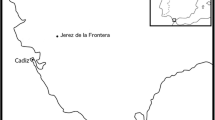Abstract
For classifying wine amphoras used at the end of the Roman Republic and the beginning of the Empire (the so-called Dressel 2–4), we present a typological approach which combines a classification algorithm with the archeological reasoning. At the first step, clusters contain only nuclei based on the different production areas. To assign a corpus of artifacts to them, it is divided for each cluster into a context (artifacts which certainly do not belong to the cluster) and a residue. For each cluster, we built characteristic definitions with logical discriminant function of morphological attributes. Each definition cuts the residue in two classes: one containing the artifacts assigned to the cluster by the definition and the complementary one in the residue. Assignment and choices of cluster definitions and context remain with the archeological expert, who submits those typological constructions to a validation process founded on archeological knowledge. Such an approach focuses on a very common situation in human sciences: the construction of a cognitive typology beginning with a partially clustered set. Clustering must be done with descriptive attributes, without knowing if they can be connected with the wanted cluster.
Similar content being viewed by others
Bibliographie
Bourrelly, L., et E. Chouraqui (1983). The use of argumentative reasoning in a knowledge base in archaeology,Comm. C.D.B.H.S.S., à paraître.
Bourrelly, L., E. Chouraqui et M. Ricard (1983). Formalisation of an approximate reasoning: The analogical reasoning, in:Symposium Information floue, representation de la connaissance et processus de décision, IFAC, 19–21 Juillet, Marseille.
Cleuziou, S., J.P. Demoule, A. Guenoche et J. Lemaitre (1980).Archéologie et Informatique, Rapport INRIA (ADISH, Paris).
Diday, E., et Collaborateurs (1979).Optimisation en classification automatique (INRIA, Le Chesnay).
Farinas del Cerro, L., W. Fernandez de la Vega et A. Hesnard (1977). Contribution à l'établissement d'une typologie des amphores dites Dressel 2–4, dans:Actes du Colloque “Méthodes formelles dans l'étude des amphores”, Rome, 27–29 Mai 1974, pp. 179–206.
Gardin, J.C., (1979).Une archéologie théorique (Paris) etTheoretical Archeology (Cambridge University Press, Cambridge).
Guenoche, A. (1981). LAST, logiciel d'analyses statistiques sur micro-ordinateur, dans:Actes du colloque “L'impact de l'informatique sur les recherches en sciences sociales”, Grenoble, 14–18 Septembre.
Guenoche, A., et A. Tchernia (1977). Essai de construction d'un modèle descriptif des amphores Dr. 20,Actes du colloque “Methodes classiques et méthodes formelles dans l'étude des amphores”, Rome, 27–29 Mai 1974, pp. 241–259.
Hamon, E., et A. Hesnard (1977). Problèmes de documentation et de description relatifs à un corpus d'amphores romaines, dans:Actes du Colloques “Méthodes classiques et méthodes formelles dans l'étude des amphores”, Rome, 27–29 Mai 1974, pp. 17–33.
Hesnard, A. (1977). Note sur un atelier d'amphores Dr. 1 et Dr. 2–4 près de Terracine,NEFRA 89(1), 157–168.
Hesnard, A., et C. Lemoine (1981). Les amphores du Cécube et du Falerne: Prospections, typologie, analyses,MEFRA 93(1), 243–295.
Hesnard, A. (1982).Les Dressel 2–4, amphores á vin de la fin de la république et du début de l'empire, Doctorat de spécialité Université de Provence, Aix, à paraître aux éditions Jean Bérard, Naples.
Lerman, I.C. (1981).Classification et analyse ordinale des données (Dunod, Paris).
Panella, C., et N. Fano (1977). Le anfore con anse bifide conservate a Pompei: contributo ad una loro classificazione, dans:Actes du colloque “Methodes classiques et méthodes formelles dans l'étude des amphores”, Rome, 27–29 Mai 1974, pp. 133–177.
Tchernia, A., et F. Zevi (1972). Amphores vinaires de Campanie et de Tarraconaise à Ostie, dans:Recherches sur les amphores romaines, Rome pp. 35–67.
Zevi, F. (1966). Appunti sulle anfore romane,Archeologia classica 18(1)208–247.
Additional information
A. Guenoche est dans le Laboratoire d'informatique pour les sciences de l'homme, C.N.R.S., Marseille.
A. Hesnard (auteur pour correspondance) est dans le Centre Camille Jullian, C.N.R.S., Aix en Provence.
Rights and permissions
About this article
Cite this article
Guenoche, A., Hesnard, A. Typologie d'amphores romaines par une methode logique de classification. Comput Hum 17, 185–198 (1983). https://doi.org/10.1007/BF02252805
Issue Date:
DOI: https://doi.org/10.1007/BF02252805




